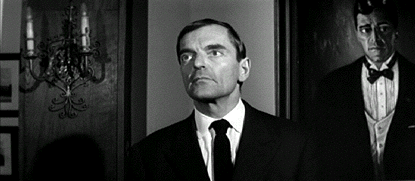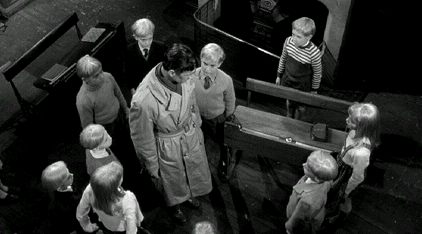Director: Jesús Franco
Writers: Jesús Franco (as Jess Frank and David Khune), René Sebille, Michel Luckin, Pío Ballesteros, Juan Cobos, Gonzalo Sebastián de Erice
Cast: Ana Castor (as Anna Astor), Howard Vernon, Hugo Blanco, Gogó Rojo (as Gogo Robins), Paula Martel, Georges Rollin, (and uncredited cast members) Fernando Delgado, Ángel Menéndez, Manuel Alexandre, José Carlos Arévalo, José Luis Coll, María Francés, Serafín García Vázquez, Marius Lesoeur, Miguel Madrid, Turia Nelson, Emilio Alonso, Joaquín Pamplona
In the Austrian town of Holfen, there has been a history of murders of women attributed to the ghost of Baron Von Klaus, a 15th century nobleman. When the murders resume in the present, the current descendants of Baron Von Klaus are concerned that his sadistic madness continues to be passed on through the generations.
The Flashback Fanatic movie review
Franco’s film operates almost like a giallo, though that film genre was just beginning the same year in Italy. There is a prolonged stalking sequence. The murders are sexually sadistic. We do not know who the killer is. There are several potential culprits presented in the story. An amateur sleuth, here a crime magazine reporter, assists the local police inspector in the investigation. Eroticism is a major element in the story and motivates the killer. The killer even wears black leather gloves. One wonders if Mario Bava and Dario Argento were paying attention.
Franco has his original Dr. Orlof, Howard Vernon, return to star as the current day Baron Max Von Klaus. This time around, Vernon’s character is introduced as suspicious rather than immediately revealed as the villain to the audience. Although, being a dead ringer for the murderous ancestor depicted in a painting prominently displayed in the Von Klaus ancestral home certainly reminds everyone that he may have inherited the Von Klaus evil.
Another suspect Von Klaus family member is Max’s nephew Ludwig. He only seems relaxed when playing his piano. Otherwise, he is tormented by the potential of an evil influence from his notorious ancestors. Hugo Blanco plays Ludwig and would appear as the title character in Franco’s next horror film Dr. Orloff’s Monster (1964).
Ana Castor plays Lida, the proprietor of the local inn. She is featured in the prolonged stalking sequence that makes this film seem like a proto-giallo. Her voluptuous, blonde beauty would be featured again in Franco’s fourth, final, and finest black-and-white horror film, The Diabolical Dr. Z (1966). In that latter film, she was Franco’s first choice to play the main villain Irma Zimmer, but she declined that role due to some burn makeup needed for the character. She ended up flaunting her fine figure in the uncredited role of a sexy hitchhiker.
The wonderfully named Gogó Rojo (billed as Gogo Robins) has an even more sexually charged role as the curvy, brunette barmaid Margaret. She appears in a scene that was pretty transgressive for the time and portends the perversity Franco’s films would continue to explore.
Aside from a bit of levity provided by the banter between the crime reporter Karl Steiner (Fernando Delgado) and the frustrated Inspector Borowski (Georges Rollin), there seems to be an oppressive gloom throughout this film that is not alleviated by the conclusion. The true responsibility for the evil acts being perpetrated remains ambiguous; we are never quite sure where to place all of the blame for the recent crimes.
The prolific Jesús Franco’s second exercise in gothic horror has been almost forgotten among his vast body of offbeat films. This Spanish-French production should be considered a possible influence on what would soon become Italy’s giallo film genre. It certainly anticipates many of that genre’s aspects. It also blatantly presents kinky eroticism that would become a more common horror film element in the years to come, especially in Franco’s own work. This film is part of that early period in Franco’s filmography when technical and narrative discipline were still employed to explore some of his interests as he told his strange stories. Despite its slow pace and thin characterizations, The Sadistic Baron Von Klaus builds to a finale that leaves us with a lingering sense of haunting tragedy.

























